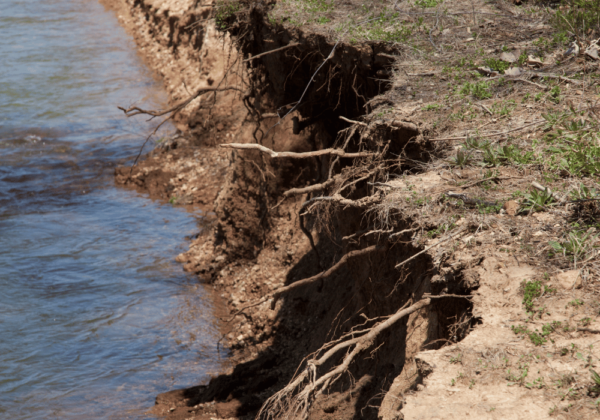Erosion is a natural process, but it can be a significant problem when it accelerates due to human activities or natural events. For environmental engineers, finding the best methods to control erosion is crucial for maintaining soil health, preventing loss of habitats, and protecting infrastructure. In this blog post, we will explore various effective erosion control methods and highlight Carriff’s erosion fabric as one of the standout solutions. By the end of this post, you will have a comprehensive understanding of different erosion control techniques and be better equipped to choose the right method for your specific projects.
Understanding Erosion and Its Impact
Erosion is the process by which soil and rock are removed from the Earth’s surface by wind or water flow, and then transported and deposited in other locations. While erosion is a natural phenomenon, human activities such as deforestation, overgrazing, and construction can exacerbate the problem. The impacts of erosion include loss of fertile topsoil, reduced agricultural productivity, damage to infrastructure, and increased sedimentation in waterways.
Causes of Accelerated Erosion
 Accelerated erosion is often caused by a combination of natural events and human activities. Heavy rainfall, strong winds, and rapid snowmelt can all contribute to increased erosion. Human activities such as mining, logging, and construction can remove vegetation cover and disturb the soil, leading to higher rates of erosion. Understanding the causes of accelerated erosion is crucial for developing effective control strategies.
Accelerated erosion is often caused by a combination of natural events and human activities. Heavy rainfall, strong winds, and rapid snowmelt can all contribute to increased erosion. Human activities such as mining, logging, and construction can remove vegetation cover and disturb the soil, leading to higher rates of erosion. Understanding the causes of accelerated erosion is crucial for developing effective control strategies.
Vegetative Cover as a Natural Erosion Control Method
One of the most effective ways to control erosion is to use vegetative cover. Plants and trees help to stabilize the soil with their root systems, reduce the impact of raindrops, and slow down surface runoff. Grasses, shrubs, and trees can all be used to protect the soil from erosion. Planting cover crops, creating buffer strips, and restoring native vegetation are all excellent strategies for using vegetative cover to control erosion.
Contour Farming and Terracing
Contour farming involves plowing and planting crops along the contours of a slope rather than up and down. This method helps to reduce soil erosion by slowing down water runoff and encouraging water infiltration into the soil. Terracing, on the other hand, involves creating stepped levels on steep slopes. Terraces act as barriers to water flow, reducing erosion and allowing for better water management. Both contour farming and terracing are effective methods for controlling erosion on agricultural land.
Mulching and Soil Cover
Mulching involves covering the soil with a layer of organic or inorganic material, such as straw, wood chips, or gravel. Mulch helps to protect the soil from the impact of raindrops, reduce evaporation, and maintain soil moisture. It also provides a protective cover that reduces the velocity of surface runoff, thereby minimizing erosion. Using mulch is a simple yet effective way to control erosion, especially on slopes and in areas with sparse vegetation.
Erosion Control Fabrics and Geotextiles
Erosion control fabrics and geotextiles are synthetic materials designed to stabilize the soil and prevent erosion. These materials are often used in construction sites, roadways, and slopes to provide immediate erosion control until vegetation is established. Geotextiles can be used to reinforce the soil, prevent sediment runoff, and promote vegetation growth. Among the various options available, Carriff’s erosion fabric stands out as an effective solution.
Carriff’s Erosion Fabric A Standout Solution
Carriff’s erosion fabric is a high-quality geotextile designed to provide superior erosion control. Made from durable synthetic materials, Carriff’s erosion fabric is easy to install and highly effective at stabilizing the soil. It allows water to pass through while preventing soil particles from being washed away. This makes it an ideal choice for protecting slopes, riverbanks, and construction sites. The fabric also promotes vegetation growth, further enhancing its erosion control capabilities.
Riprap and Rock Barriers
Riprap is a method of erosion control that involves placing large rocks or stones along shorelines, riverbanks, and slopes. The rocks act as a barrier, protecting the soil from the force of water and reducing erosion. Riprap is particularly effective in areas with high water flow or wave action. Rock barriers can also be used in combination with vegetation to provide long-term erosion control and habitat restoration.
Check Dams and Silt Fences
Check dams are small barriers constructed across drainage channels and streams to slow down water flow and reduce erosion. They help to trap sediment and allow water to infiltrate into the soil. Silt fences, on the other hand, are temporary barriers made of fabric or other materials placed around construction sites to prevent sediment runoff. Both check dams and silt fences are valuable tools for controlling erosion in areas with high water flow and construction activities.

